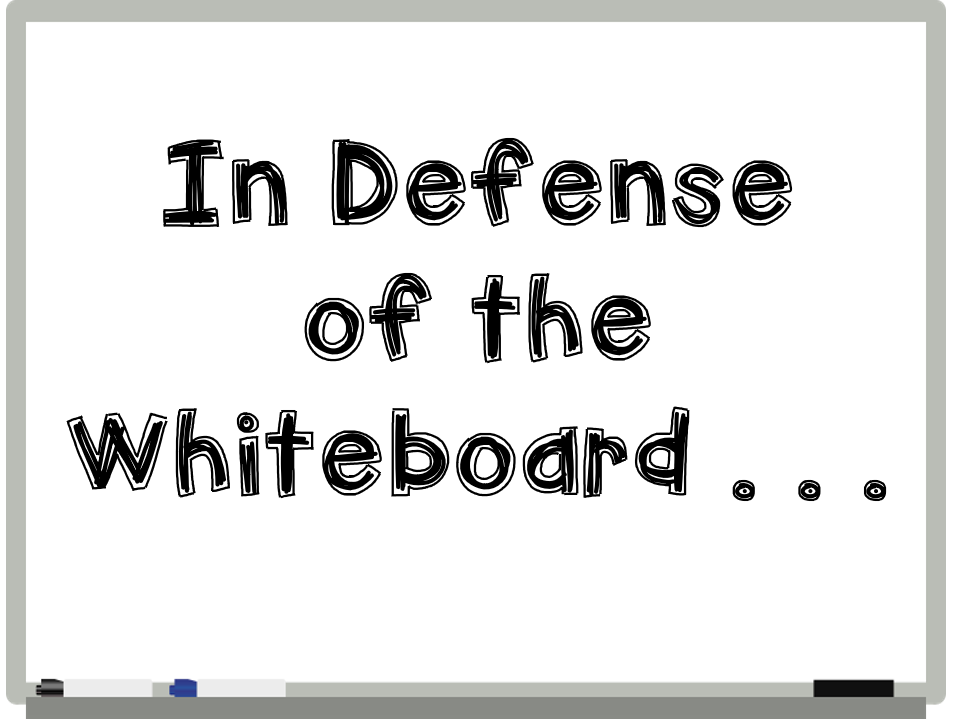
It’s time to rescue the whiteboard.
Every once in a while, I’ll see a new book or a publisher’s promotion poking fun at using a classroom style in a youth ministry discipleship setting. I’ve seen a book cover displaying a suit-wearing teacher with a whiteboard in a living room full of teens. I’ve seen a depiction of Jesus teaching His disciples who are sitting at schoolroom desks looking bored with Jesus writing on the board “Feed my ______.” In those examples, the mockery’s implication is impossible to miss: don’t teach this way.
I agree. Mostly. Granted, lecture-style classroom is not the style of the day for youth ministry. It likely never should have been nor should ever be. But here’s the thing: true discipleship cannot happen without the Bible. And the Bible is one big book of text. Every promise. Every hope. Every warning. Every description of who we are in Christ. All of these come in the form of text, a text that is built for personal discovery and community processing.
It’s in the overlap between personal discovery and community processing when we need a whiteboard.
Best practices in teen discipleship call for youth workers to do whatever we can to help teens engage in Scripture, matching their learning styles to how a passage wants to be explored. The whiteboard is a tool that can appeal across the learning-style board (no pun intended), whether in one session, or throughout a study series. Of course, the whiteboard isn’t the magical tool, it’s what it allows you to do: to coalesce information, information that’s possibly been discovered in solitude, into one central spot where the entire group can then interact with the life-changing information. (We have many other tools in this digital era that can help us do this.)
Here’s how it might work.
Let’s say your small group is studying 1 John 4. First you’d want to give students time to experience the passage on their own. Maybe invite them to take a mini personal retreat in your room or outside. Challenge them to find as much detail as they can about love in this chapter—maybe invite them to draw a heart over the word “love” to help them notice detail (that little exercise alone connects with the reading, visual, and kinesthetic learners). After a few minutes call for a regroup and then simply ask: What did this passage teach you about love? Or qualify it with, What’s the biggest (or most convicting, or most challenging) thing this passage taught you about love?
Now comes the whiteboard (or a similar tool). Ask students to tell you what they found (this will cater to the auditory learner). As students share, don’t let their observations or insight float out of the room. Capture it by writing it down on the whiteboard, organizing it into columns of “instruction” or “insight” (which will light up your visual learner). Or better yet, ask for a volunteer to write it on the board for the group (your kinesthetic learners will want to take turns being the volunteer).
You’ve barely started and you’ve already used the four big learning styles. Now that you’ve captured your students’ top observations and convictions and have them on display, you can now apply and grapple with what God is saying in His Word. This is an opportunity to employ even more tools that cater to learning styles:
- Invite students to draw a sketch or a diagram of what the information on the whiteboard is expressing (they can use their own student sheets or (gasp!) a second whiteboard.
- Invite students to create a short drama about love using the information they’ve discovered.
- Invite students to use the tool of “story” to work as a group in creating a story of 1 John 4. If “storying” sounds unfamiliar to you, here are a couple of resources that can introduce you to this approach.
Book: Shaped by the Story click here
Video: click here
I know some of this comes from my personal feeling that, like a falling tree not making a sound when no one hears it, a thought isn’t realized unless it’s written down. But here’s the thing: By keeping students’ observations on display throughout your group session, you are providing a very tactile depiction of the truth that students have explored. The board then serves as a beacon to keep discussion on track and to assure more accurate application. And that, is where the power is.
Let’s rescue the whiteboard.